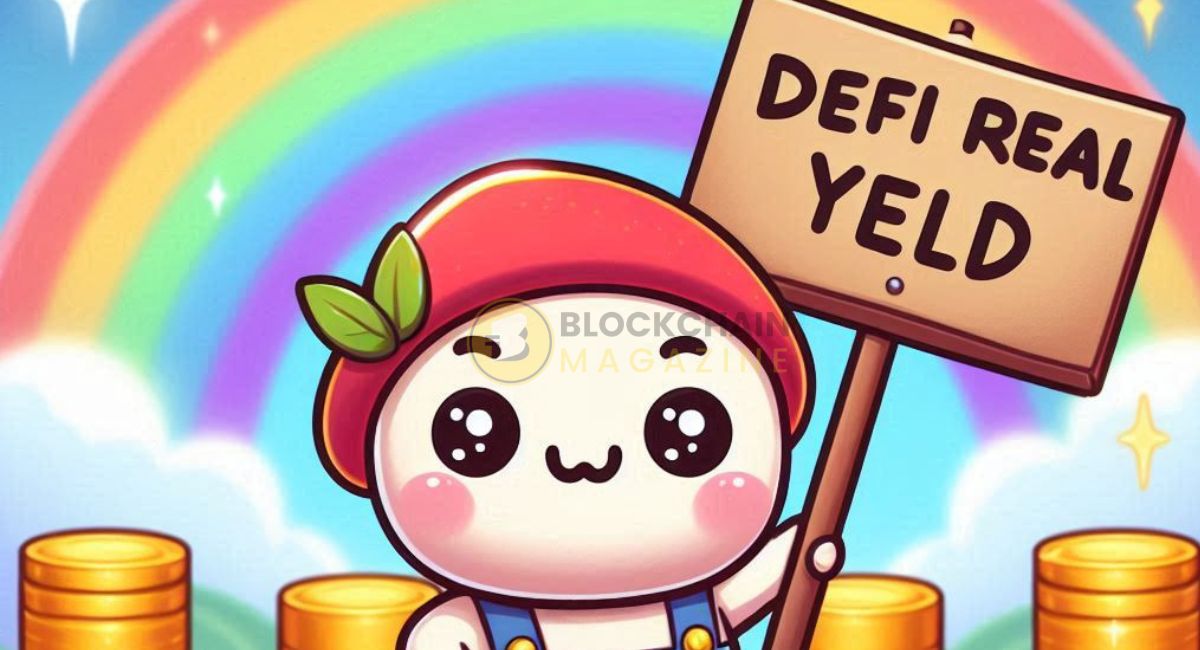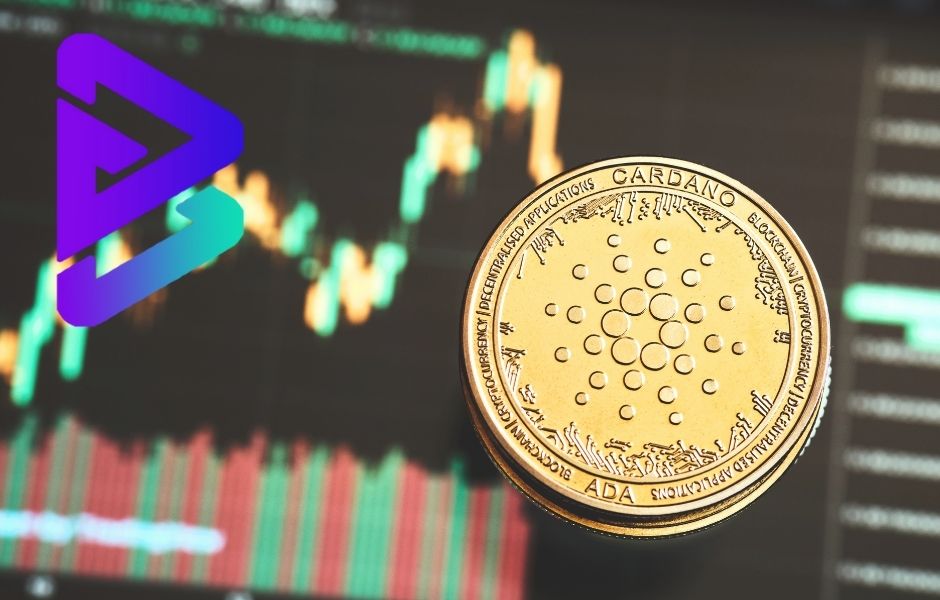DeFi Real Yield: Increasing Interest in Amazing DeFi Projects Offering Sustainable Yields In 2025
The decentralized finance (DeFi) space has experienced explosive growth over the past few years, revolutionizing the way individuals engage with financial services. One of the major attractions of DeFi is its promise of high yields, often significantly higher than those offered by traditional financial institutions. However, these yields have been accompanied by a fair share of risks, and the sustainability of these returns has come under scrutiny. This has led to the emergence of a new trend within the DeFi ecosystem: real yield.
Understanding the Shift Toward Real Yield
In the past, many DeFi projects relied on inflationary token emissions—essentially printing more tokens and offering them as rewards to users who locked up their assets. These high yields were often unsustainable, as the issuance of tokens without any real economic backing could lead to inflationary pressures and a subsequent decrease in the token’s value. This led to what some have referred to as “yield farming,” where the primary focus was on acquiring as many tokens as possible rather than long-term sustainability.
In response to these concerns, DeFi projects have begun shifting toward offering real yield, a more sustainable model where yields are generated from actual revenue-producing activities, such as lending, staking, or providing liquidity in productive markets. Instead of relying on inflationary token issuance, these projects focus on generating yields that are backed by real-world assets or fees generated within the ecosystem.
Key Highlights: The Evolution of Real Yield in DeFi
- Real Yield vs. Inflationary Yield: In the context of DeFi, real yield is backed by revenue-generating activities and not by the inflationary issuance of tokens. Real yield projects create sustainable returns by generating profits from actual on-chain activities.
- Transparency and Security: Many projects offering real yield emphasize transparency, as users can trace the sources of returns and verify how the profits are being generated.
- Increased Institutional Interest: As the DeFi ecosystem matures, more institutional players are becoming interested in real yield opportunities because they are more sustainable and compliant with traditional financial norms.
The Growth of DeFi and the Need for Real Yield
The DeFi market has come a long way since its inception in 2017, when projects like MakerDAO and Uniswap were some of the first to offer decentralized lending and liquidity pools. However, as more and more capital flowed into the space, the rewards offered by many DeFi protocols began to lose their appeal due to their unsustainable nature.
At the heart of the problem was the inflationary model. In many early DeFi projects, liquidity providers were rewarded with newly minted tokens that would often flood the market, leading to inflation and a decline in value. While these models initially attracted investors with the promise of high yields, they were ultimately unsustainable, leading to market corrections and a loss of confidence from both retail and institutional investors.
Over time, the DeFi community began recognizing the importance of creating long-term value rather than relying on token inflation to attract capital. This led to the rise of real yield projects, which generate returns through productive economic activities rather than token issuance. Real yield models are built around the principle of providing actual returns backed by genuine demand for DeFi services, whether through borrowing, lending, trading fees, or other financial activities.
How Real Yield Works in DeFi
Real yield projects are based on the principle that returns should come from actual economic activity, such as trading fees, interest rates, and fees paid for lending and borrowing, rather than from the issuance of new tokens. In such models, the returns are often tied to real-world assets or services that drive the ecosystem.
One example is Aave, a decentralized lending protocol, where lenders receive interest payments for providing liquidity to borrowers. These interest rates are driven by the demand and supply for the assets being lent, creating a market-driven yield that does not rely on new token emissions. Similarly, Uniswap and SushiSwap offer liquidity providers rewards in the form of fees generated from transactions on the platform, rather than issuing new tokens to incentivize liquidity.
Another example of real yield comes from Yearn.finance, which offers a yield aggregator that optimizes the yield of staked assets across various DeFi protocols. Rather than offering incentives through inflationary tokens, Yearn generates yield by taking a small percentage of the fees generated through its operations.
Real yield models are seen as a more sustainable and transparent way to provide yields, as users can trace the sources of the returns. These returns are generated by actual economic activity within the DeFi ecosystem, not by the printing of new tokens. This makes them more resistant to inflation and the market corrections that often accompany the influx of new tokens.
The Rise of Sustainable DeFi Projects
Over the past year, there has been a growing interest in DeFi protocols that generate real yield. One of the driving factors behind this shift is the increasing demand for sustainable investment opportunities. DeFi projects that offer real yield allow users to participate in markets with fundamentally-backed returns. This is a stark contrast to earlier DeFi protocols, where yields were often inflated by unsustainable token issuance.
Projects such as Lido Finance, which offers liquidity staking for Ethereum 2.0, and Curve Finance, a decentralized exchange offering optimized stablecoin trading, have become attractive to investors because of their focus on long-term sustainability. These protocols generate revenue by providing essential financial services such as staking and liquidity provisioning, ensuring that the returns to investors are linked to real activity within the ecosystem.
A growing number of decentralized autonomous organizations (DAOs) are also embracing real yield models. These DAOs aim to create ecosystems where profits generated from activities such as governance, staking, and trading are shared with token holders. The TokenSets DAO, for instance, generates yield through algorithmic trading strategies, ensuring that the returns provided to token holders are tied to the performance of the underlying assets.
Institutional Interest in Real Yield Projects
As the DeFi space matures, institutional interest in decentralized finance has grown. However, institutional investors are often cautious when it comes to projects that rely heavily on inflationary tokens. They are more inclined to invest in projects that offer real yield, as these projects align more closely with the traditional financial sector’s desire for stable and sustainable returns.
For example, Tokenized Real Estate platforms like RealT offer tokenized ownership in real-world real estate, with rental income paid to token holders. This provides a real-world revenue stream, giving investors a more secure return compared to inflationary tokens. Similarly, Yield Protocol focuses on offering fixed-rate borrowing and lending services backed by real-world assets, providing a more predictable yield to investors.
Moreover, as regulatory clarity around DeFi projects increases, institutional investors are looking for opportunities in the DeFi space that comply with traditional regulatory standards. This creates an increasing demand for projects that generate real yield, which are seen as more legitimate and less speculative.
Risk Mitigation and Real Yield
One of the key benefits of real yield models is that they help mitigate the risks associated with inflationary yield farming. Since the yields are backed by real-world economic activity, they are less vulnerable to sudden market fluctuations caused by the issuance of new tokens.
Additionally, by focusing on market-driven incentives, real yield protocols can more easily align the interests of users with the long-term health of the ecosystem. As a result, users are less likely to exit the project when token prices decline, which can often lead to a run on liquidity in inflationary models.
However, it is important to note that even real yield models come with inherent risks. For instance, the value of the underlying assets that generate the yield can fluctuate, and if the demand for a particular DeFi service declines, the returns to users may diminish. This makes it crucial for investors to perform thorough due diligence before participating in real yield projects.
The Future of Real Yield in DeFi
The future of real yield in DeFi looks promising. As the industry matures, more projects are likely to adopt sustainable models that are less reliant on inflationary token emissions. This shift will likely attract more institutional capital and institutional investors, as well as more conservative individual investors who are seeking sustainable and predictable returns.
The tokenization of real-world assets such as real estate, commodities, and equities could further drive the demand for real yield, as these assets provide clear value and generate measurable returns. Furthermore, as regulatory clarity improves, DeFi projects focused on real yield may become more attractive to institutional investors, who are increasingly seeking compliant investment opportunities.
As more DeFi projects embrace sustainable yield models, it is likely that the industry will experience a wave of innovation in financial products that cater to different investor needs, whether through staking, lending, liquidity provision, or other financial services.
The Road Ahead: Adoption and Growth
While real yield projects are still in their nascent stages, the DeFi ecosystem is witnessing a shift toward more sustainable financial practices. As interest in real yield projects grows, we are likely to see more DeFi protocols that focus on providing stable returns based on real economic activity.
The road ahead is filled with challenges, particularly around regulation and risk management. However, the increasing focus on sustainable yield models represents a positive shift for the DeFi space. As these projects mature and institutional capital flows into the space, real yield could become the gold standard for DeFi, driving further adoption and growth.
Also, read – Binance Smart Chain and the Rise of DeFi Platforms: All The Amazing Things You Need to Know In 2024
Conclusion
The increasing interest in real yield in the DeFi space marks a significant turning point for decentralized finance. By focusing on sustainable, revenue-backed returns, DeFi projects offering real yield are set to change the dynamics of the industry, attracting both individual and institutional investors seeking more reliable and transparent returns. As the DeFi ecosystem continues to evolve, we can expect real yield to play a central role in shaping the future of finance, offering a more stable and sustainable alternative to inflationary yield farming models.
Stay informed with daily updates from Blockchain Magazine on Google News. Click here to follow us and mark as favorite: [Blockchain Magazine on Google News].
Get Blockchain Insights In Inbox
Stay ahead of the curve with expert analysis and market updates.
latest from tech
Disclaimer: Any post shared by a third-party agency are sponsored and Blockchain Magazine has no views on any such posts. The views and opinions expressed in this post are those of the clients and do not necessarily reflect the official policy or position of Blockchain Magazine. The information provided in this post is for informational purposes only and should not be considered as financial, investment, or professional advice. Blockchain Magazine does not endorse or promote any specific products, services, or companies mentioned in this posts. Readers are encouraged to conduct their own research and consult with a qualified professional before making any financial decisions. The featured image used is just a creative depiction of the title and it does not intend to hurt sentiments of any person or institution. If it hurts anyone sentiments, please do not hesitate to reach out to Blockchain Magazine.

 Bitcoin
Bitcoin  Ethereum
Ethereum  XRP
XRP  Tether
Tether  Solana
Solana  USDC
USDC  Dogecoin
Dogecoin  Cardano
Cardano  Lido Staked Ether
Lido Staked Ether  TRON
TRON  Wrapped Bitcoin
Wrapped Bitcoin  Wrapped stETH
Wrapped stETH  Chainlink
Chainlink  Avalanche
Avalanche  Sui
Sui  Stellar
Stellar  Litecoin
Litecoin  Toncoin
Toncoin  Shiba Inu
Shiba Inu  LEO Token
LEO Token  Hedera
Hedera  MANTRA
MANTRA  USDS
USDS  Hyperliquid
Hyperliquid  WETH
WETH  Polkadot
Polkadot  Bitcoin Cash
Bitcoin Cash  Bitget Token
Bitget Token  Ethena USDe
Ethena USDe  Wrapped eETH
Wrapped eETH  Uniswap
Uniswap  Monero
Monero  NEAR Protocol
NEAR Protocol  Pepe
Pepe  WhiteBIT Coin
WhiteBIT Coin  Aave
Aave  Bittensor
Bittensor  Ondo
Ondo  Aptos
Aptos  Internet Computer
Internet Computer  Dai
Dai  Official Trump
Official Trump  Ethereum Classic
Ethereum Classic  Mantle
Mantle  Tokenize Xchange
Tokenize Xchange  OKB
OKB  Gate
Gate  sUSDS
sUSDS  Coinbase Wrapped BTC
Coinbase Wrapped BTC 




